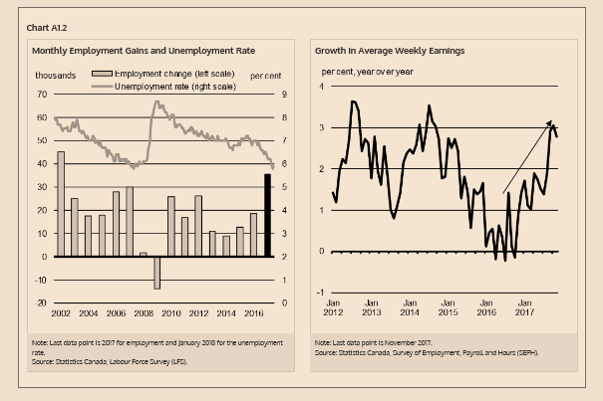Canada’s economy grew 3% in 2017 and created a huge number of new jobs (427,300 jobs). The unemployment rate in January and February fell to 5.8% — a four-decade low.
In 2017 Canada created an average of 35,600 jobs per month, most of which were full-time positions. This was the strongest expansion since 2002 (See the following chart.).
According to the Bank of Canada’s Business Outlook Survey, the share of firms facing intense labour shortages compared to one year ago is close to its highest level in over a decade.
The tightening of the Canadian labour market bodes well for future wage growth, which picked up in 2017.
“Consistent with strong employment gains, a sharply lower unemployment rate and an economy that is estimated to be operating close to its potential, year-over-year growth in average weekly earnings has accelerated sharply from no growth in 2016 to 2.8 per cent currently.” (Canada’s Feb. 2018 Budget, Annex 1)

Canada’s Job Market Bounced Back In Feb. After Posting Massive Losses In January
After losing an astonishing 88,000 Canadian jobs in January there was a slight recovery of 15,400 jobs in February. It is interesting to note, however, that virtually all the new jobs created last month were part-time, while full time employment actually dropped by nearly 40,000 in February.
As well, the household survey indicated that average wages eased back to a 3.1% y/y pace in February from the 3.3% figure recorded in the previous month. Ironically, even this modest monthly job increase was enough to reduce the unemployment rate to 5.8%, returning it once again to the lowest level in more than 40 years.
While the modest job gains in February are certainly welcome, nonetheless there is the worry that the tilt towards part-time employment and the public sector wasn’t encouraging.
Nonetheless there is so much volatility attached to the Canadian labour force survey estimates, that a more comfortable viewing of the true underlying trend should focus on year over year change.













Leave A Comment